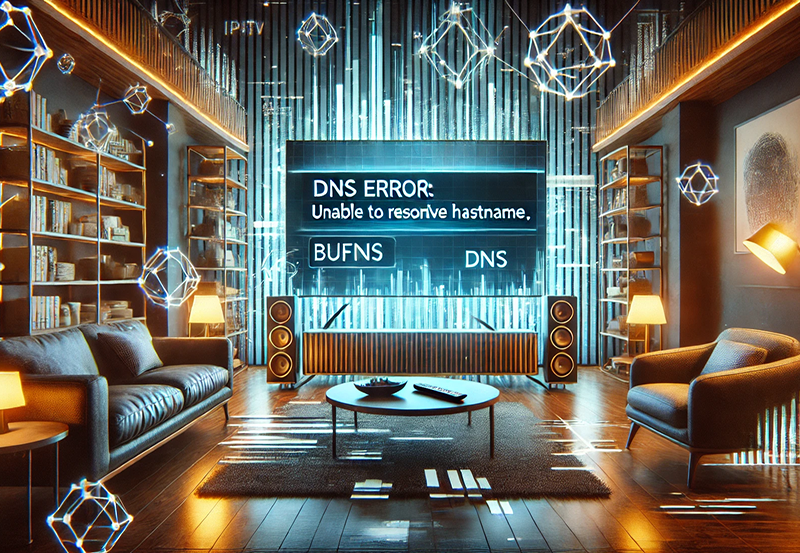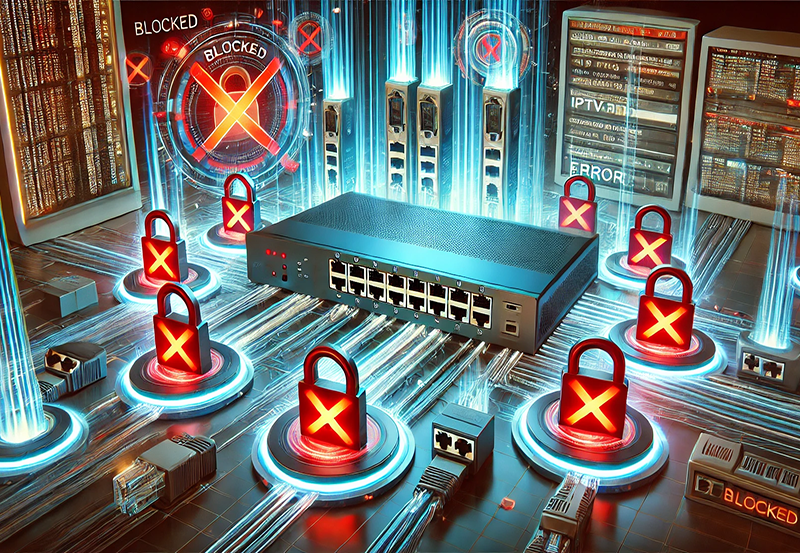Internet Protocol Television (IPTV) is rapidly becoming the preferred choice for consumers who desire a customizable and affordable TV viewing experience. While IPTV offers flexibility and a range of channels, one of the persistent issues that users face is network congestion. This problem can significantly affect the quality of IPTV services, leading to frustrated viewers and a decrease in satisfaction. In this article, we’ll explore how network congestion impacts IPTV quality and offer practical solutions to mitigate these challenges.
What is Network Congestion?
Network congestion occurs when a network node or link carries more data than it can handle, resulting in packet loss and delay. Essentially, when too many users access the same network resources simultaneously, it can become overloaded. This is akin to a traffic jam on a highway—when too many cars try to pass through a single point, the flow slows down or stops.
For IPTV users, network congestion can manifest as buffering, lag, and a decline in streaming quality. Understanding the root causes of congestion is critical in finding ways to avoid these disruptions and enhance the overall IPTV viewing experience.
Pro Insight:
Stream seamlessly across devices with IPTV service in Canada, offering unmatched stability and content variety.
Causes of Network Congestion in IPTV
Limited Bandwidth
Bandwidth is the amount of data that can be transmitted in a fixed amount of time. The higher the number of users accessing the IPTV services at the same time, the more bandwidth is consumed. Limited bandwidth can therefore lead to congestion, impacting features such as real-time streaming. This is particularly noticeable during peak hours when the demand is at its highest.
High Concurrent Users
Another cause of network congestion is the sheer number of users trying to access IPTV services simultaneously. This is common during major events like live sports, where viewers all want to watch the game live. The spike in user activity can overwhelm networks that are not adequately prepared.
Suboptimal Network Infrastructure
Poor network infrastructure can exacerbate congestion issues. Many regions have outdated infrastructure that struggles to support modern IPTV services. Upgrades to more advanced technology can alleviate some congestion issues by providing faster and more reliable connections.
Impact of Network Congestion on IPTV Quality
Understanding the impact of network congestion on IPTV quality is essential for both service providers and users looking to improve their experience. Below are some of the direct consequences of network congestion:
Reduced Stream Quality
The most noticeable impact of network congestion is reduced stream quality which can be frustrating for viewers. Lower resolutions, freezing images, and poor picture quality detract from the immersive experience that IPTV services promise. Users striving to discover superior IPTV viewing might find themselves hindered by these quality issues.
Increased Latency and Buffering
IPTV relies on real-time data transmission to provide seamless streaming. Congestion can lead to delays in data delivery, resulting in increased latency and buffering. These interruptions can make watching IPTV feel like a chore rather than a leisure activity.
Solutions to Network Congestion for Better IPTV Quality
Fortunately, there are several strategies both service providers and users can implement to combat the issues arising from network congestion.
Optimizing Network Infrastructure
For service providers, upgrading to state-of-the-art infrastructure can dramatically improve service quality. Investments in fiber-optic connections and advanced routing technologies can reduce congestion by increasing the available bandwidth and enhancing data transmission speeds.
QoS and Traffic Management
Quality of Service (QoS) features allow service providers to prioritize IPTV traffic over other types of data. By ensuring dedicated bandwidth for IPTV services, congestion can be managed effectively. Additionally, advanced traffic management systems enable dynamic allocation of resources, ensuring smoother streaming.
Encouraging Users to Optimize Their Home Networks
- Implement wired connections over wireless for streaming devices.
- Use quality routers with better traffic handling capabilities.
- Avoid peak times for streaming whenever possible.
By implementing these changes, users can experience more stable and higher-quality streaming even if network congestion occurs.
The Balance Between Quality and Cost: Affordable IPTV Services
While solving network congestion is crucial, maintaining affordable IPTV services remains a priority for consumers. Balancing quality and cost is a challenge both providers and users contend with regularly. Here’s how you can enjoy the best IPTV channels without breaking the bank.
Choosing the Right Provider
Selecting a reliable IPTV provider can make a world of difference in your streaming experience. Research multiple providers to compare deals, service reliability, and customer support. An informed choice can lead to a more seamless affordable IPTV experience.
Utilizing Optimization Options
Many IPTV services offer various subscription tiers. Choosing a plan that balances affordability with the quality of service can help you make the most of what’s on offer. Look for flexible options that allow easy upgrades as your needs change.
Frequently Asked Questions about Network Congestion and IPTV

What is network congestion, and how does it affect IPTV?
Network congestion happens when a network is overloaded with too much data, causing reduced streaming quality, increased buffering, and lag for IPTV services. Addressing congestion through proper network management can improve streaming quality.
Can upgrading home internet improve IPTV quality?
Yes, upgrading to a faster and more reliable internet connection can significantly enhance IPTV quality. A superior connection provides more bandwidth, reducing chances of congestion on the user’s end.
Are there equipment upgrades that can help manage congestion?
Investing in advanced Wi-Fi routers with better traffic management capabilities and using wired connections where possible can help manage congestion and improve IPTV reliability in your home network.
How can service providers prevent network congestion?
Service providers can deploy advanced technologies like fiber optics and state-of-the-art routing to increase available bandwidth. Implementing Quality of Service (QoS) measures also ensures IPTV traffic is prioritized, reducing potential congestion.
Is IPTV cost-efficient compared to cable TV?
Yes, IPTV often provides a more cost-effective solution with greater flexibility and access to a broad range of channels, including premium ones. Choosing the right provider and plan ensures high-quality streaming without excessive costs.
The digital landscape is ever-evolving, and so is the way we consume media. IPTV offers an affordable, customizable option, but network congestion continues to be a challenge. However, with the right strategies and equipment, both service providers and users can mitigate these issues, ensuring a high-quality streaming experience for everyone involved.
Resolving the Mystery of Vanishing Channels on IPTV





